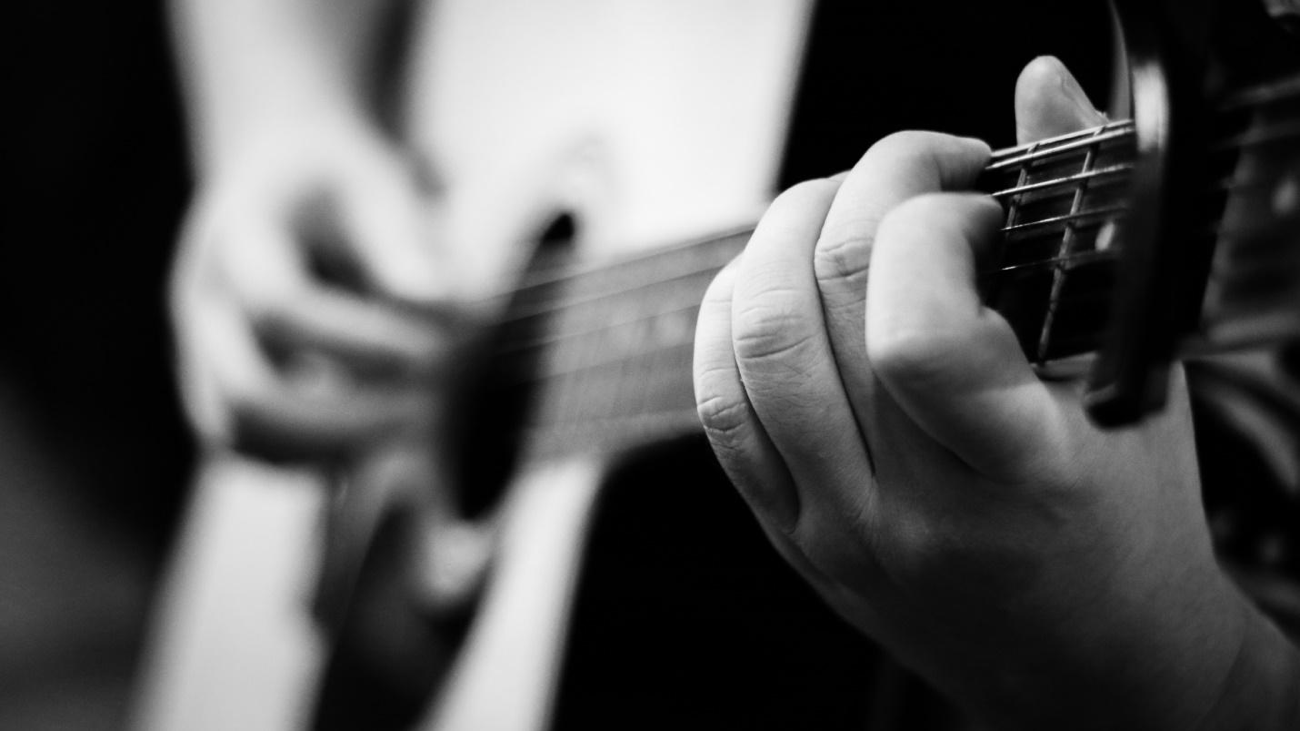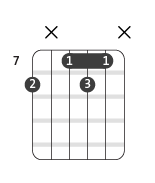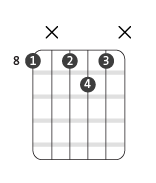Here’s a guest post from our jazz friends over at jazzguitarlessons.net.

Mention jazz chords to beginners and everybody automatically pictures a chord description longer than their mailing address.
In reality they are no different than any other chord to learn, and you have probably listened to many jazz chords in everything from pop songs to rock. We’ll take a look at some basic jazz chords and add a little flavor to your soundscape.
What is a Jazz Chord?
There really isn’t a specific chord that belongs solely to one genre or another, it’s just that certain types of chords are often more prevalent in some genres than others. They imbue the music with a specific character.
Most jazz chords contain a 7th.
I won’t delve too deeply into any theory here but basically each note in a scale is a certain degree away from the root note such as the 2nd, 3rd, 4th and so on.
C Major Diatonic Scale
| Note | C | D | E | F | G | A | B |
| Degree | I | II | III | IV | V | VI | VII |
| root | 2 | 3 | 4 | 5 | 6 | 7 |
So, in a C major scale the 7th is a B note.
If we were to highlight the first, the third and the fifth degrees in the above table we would have a basic triad, whereby the minimum amount of notes in the proper intervals of thirds have been met in order to be classified as a chord. Add the B (7th) and we have a CM7 chord.
The degree numbers depicted in Roman numerals are in keeping with traditional Western music and are common even today.
Four Essential Jazz Chords
The following chords are important to know because they represent the most common chords in jazz that will actually allow you to play along with many jazz songs.
- Major 7 (M)
- minor 7 (m)
- Dominant 7
- Diminished 7
Major 7
You will see the major 7th also described in lead sheets and music with the following symbols.
- C▲
- C and number 7 with a slash through the stem
- CM7 (must be a capital M)
- Major 7
- Maj 7
Grab your guitar and we’ll start with some CM7 chords to get your fingers around. Let’s start on the third fret.

Here it is on the eighth fret.

Be careful with the muted strings.
Both of these chord formations are movable up and down the neck to play other chords such as DM7 on the 10th fret and so on.
Minor 7
Here is how to identify a minor 7th chord on charts and music sheets.
- minor 7
- min 7
- m7 (must have a small m)
- -7 (a minus sign)
Make sure you still have your guitar because in the 8th fret chord we’ll make you look and sound like you’ve been playing with the jazz greats all your life.

For the following chord formation jazz guitarists will play this chord with the second and third fingers as shown here. You’ll get some real jazz cred with this one. Like any new chord this can seem awkward at first but as you advance in your skills you will notice the benefits of this fingering.

The trickiest part about these chords is ensuring you are not sounding the muted strings and that all other notes can be heard when played independently.
Dominant 7
The dominant 7 chord printed on charts and music sheets are as follows.
- 7
- 7th
- Sometimes dom 7
Dominant chords are basically the chord with a number after it. There is no major or minor definition included with this one.
You should note however, that if a bracketed number is written after the chord, this means that it is an altered dominant chord with an added 9th or 13th degree perhaps. We will discuss these chords a little bit later.
Try these ones out.

Diminished 7
The diminished 7 chord is indicated as follows:
- dim 7
- diminished (b5)
- C°


Observation
You may have noticed that all four of the above chord types merely move one or more of the note degrees by flattening or sharpening them.
For example, if we have a CM7 chord, we can show the relationship to the root note as follows.
CM7

The highlighted columns depict each note of the chord chronologically from the root.

The E (third) is played by the fourth finger here on the 5th fret.
Now, notice in the minor chord diagram below where the third and the seventh are played on the fretboard.

The third in this minor 7 chord is on the fourth fret now while the major 7 chord is on the fifth. By moving the note down by one fret, we have flattened the third to an Eb.
You will notice that the 7th has also been flatted (moved down 1 fret) to a Bb.
This is what makes a major 7th chord into a minor 7th chord (flatten 3rd and 7th).
Play the major and minor chords one after the other to hear the difference.
I know that we were not going to talk too much about theory but learning a bit will really help you out in your understanding of these different types of chords we have talked about.
For instance, each type of chord we have shown here has its own formula by degree.
- major 7 1-3-5-7
- dom 7 1-3-5-b7
- minor 7 1-b3-5-b7
- dim 7 1-b3-b5-bb7 (double flat, as in moved down two frets)
Summary
Jazz chords are played primarily in closed positions and often higher on the neck to give that jazz sound. By closed, I mean each note is fingered and there are no open strings sounding. This is in comparison to some of the first chords you may have learned near the headstock of your guitar such as E minor with only two notes fingered and the rest of the strings played open.
Also, we have talked a little bit about theory and I recommend you learn more if interested.
“Autumn Leaves” is a ‘jazz standard‘ for you to practice your new chords on. There are many more chords and songs to learn and I hope you were able to get a start with these.
Enjoy!
About the Author
Marc-Andre Seguin is the webmaster, “brains behind” and teacher on JazzGuitarLessons.net, the #1 online resource for learning how to play jazz guitar. He draws from his experience both as a professional jazz guitarist and professional jazz teacher to help thousands of people from all around the world learn the craft of jazz guitar.
Team lead Premium by day, poet by night. On weekends, Jorine likes to explore the outer corners of her spectrum of interests, be it at a punk concert, a techno club or a pop festival.



